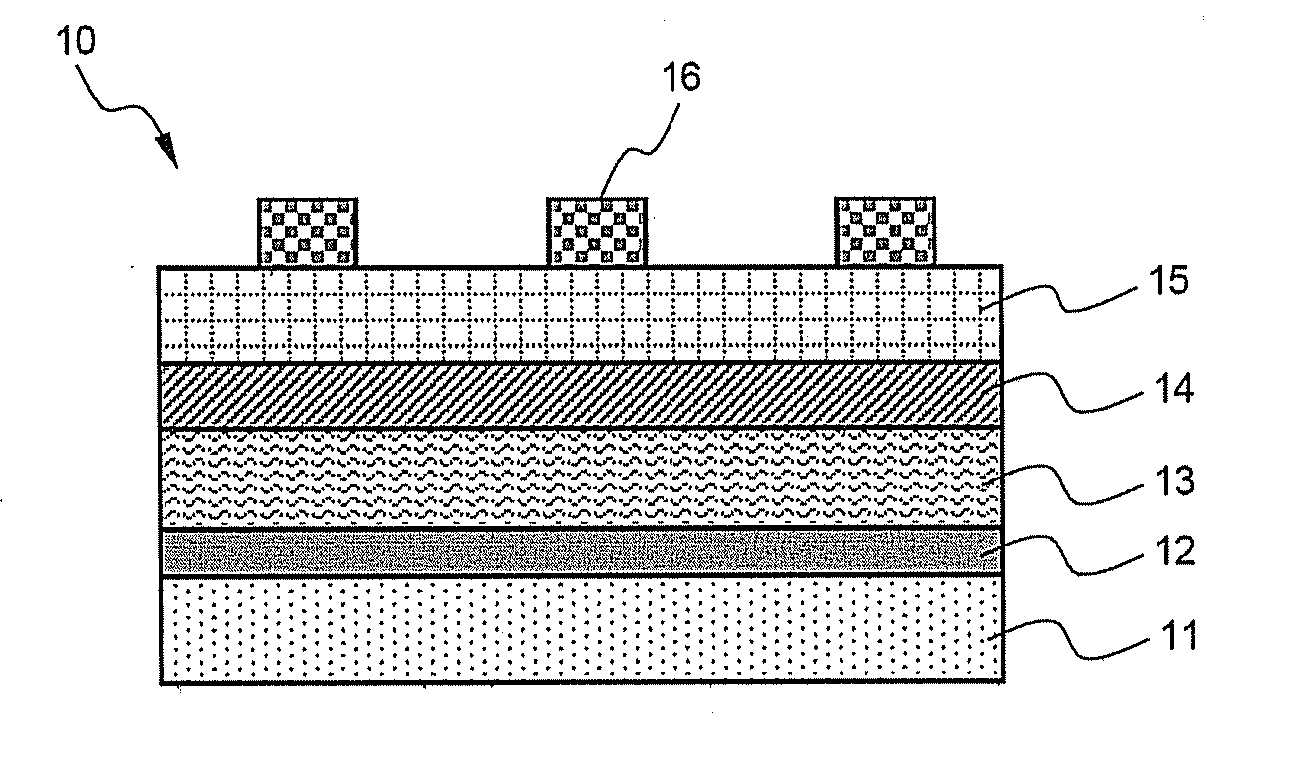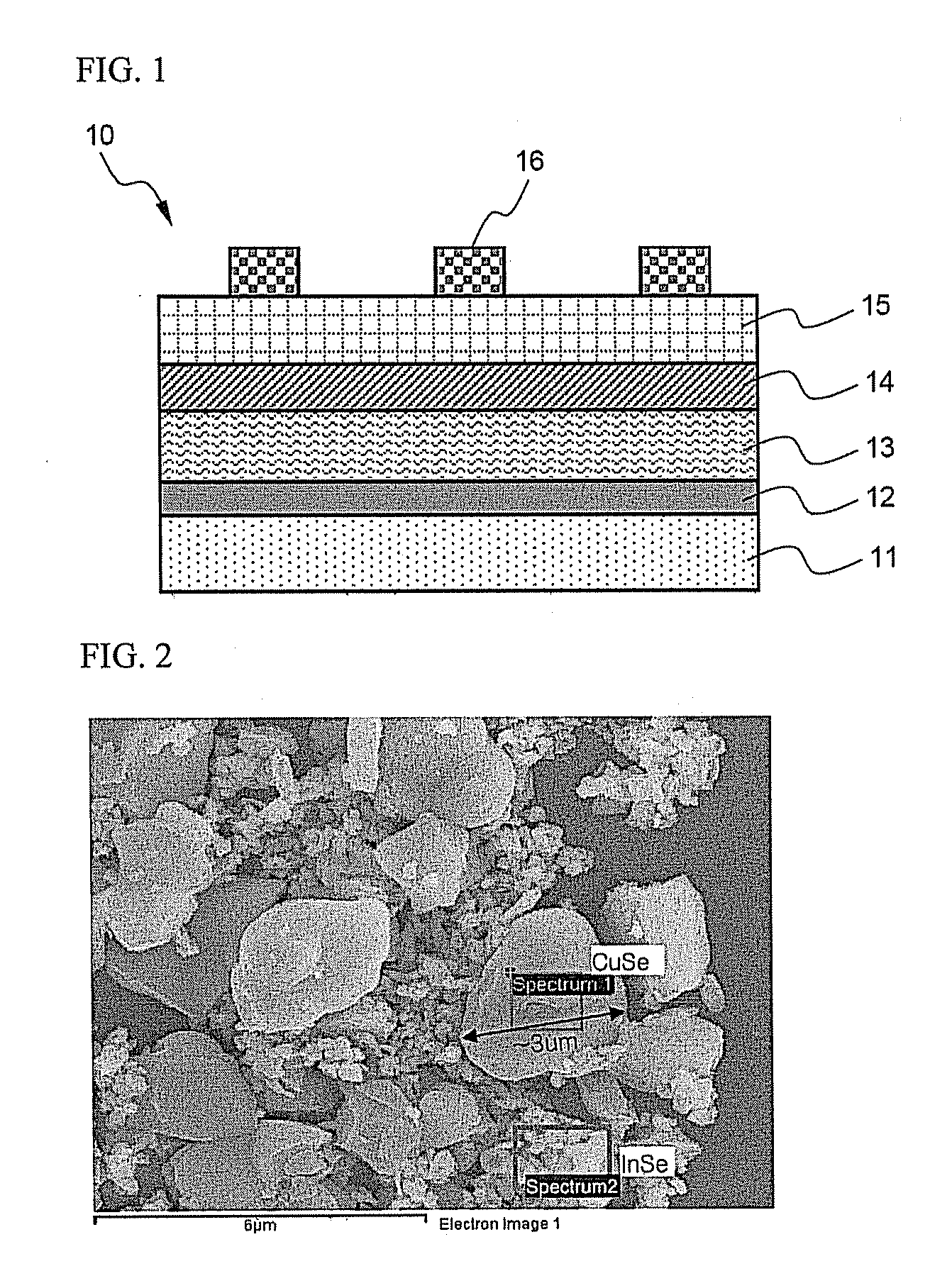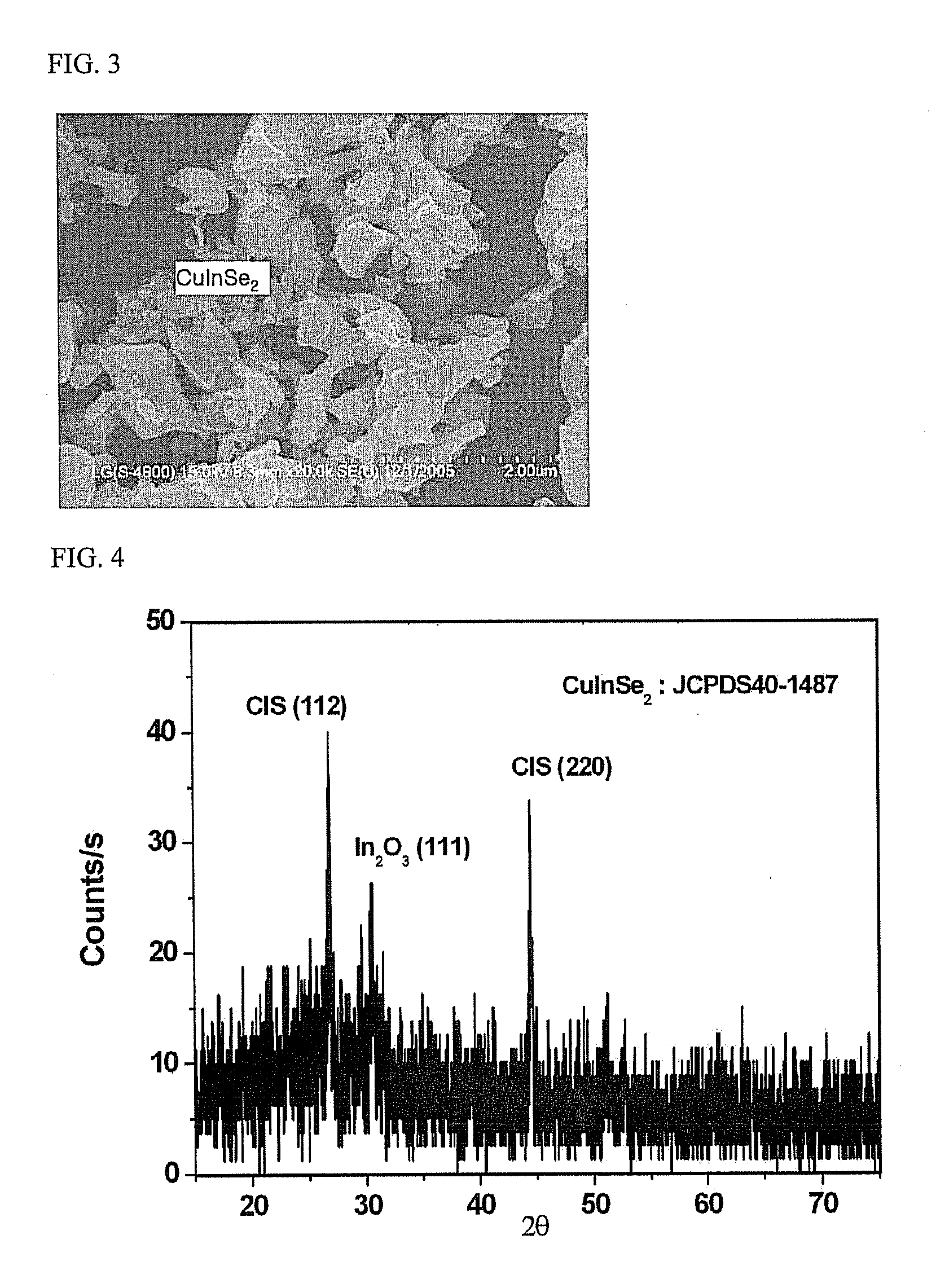Process for preparation of absorption layer of solar cell
- Summary
- Abstract
- Description
- Claims
- Application Information
AI Technical Summary
Benefits of technology
Problems solved by technology
Method used
Image
Examples
example 1
Preparation of CIS from CuSe—InSe
[0053] 0.03 M copper nitrate and 0.02 M selenious acid were mixed in 250 mL of ethylene glycol. The resulting reaction solution was heated to 170° C. and reacted for about 3 hours to prepare CuSe nanoparticles. Alternatively, polyethylene glycol or butanediol may be used instead of ethylene glycol as a reaction solvent.
[0054] Further, 0.02 M indium nitrate and 0.02 M selenious acid were mixed in 250 mL of diethylene glycol or butanediol. The resulting reaction solution was heated to 170° C. and reacted for about 3 hours to prepare InSe nanoparticles.
[0055] Then, using α-terpineol and propylene carbonate (PC) as solvents, and polypropylene carbonate as a binder, the thus-prepared CuSe and InSe nanoparticle powder was dispersed to prepare a paste. Herein, the weight ratio between individual components was terpineol:PC:polypropylene carbonate:powder=43.34:26.65:5.01:25. The thus-prepared paste was coated on a glass substrate using a doctor blade, fol...
example 2
Preparation of CIS from CuSe2—InSe
[0058] 0.03 M copper nitrate and 0.03 M selenious acid were mixed in 250 mL of 1,3-butanediol. The same procedure was repeated as in Example 1, except that the resulting reaction solution was heated to 150° C. and reacted for about 3 hours to prepare CuSe2 nanoparticles.
[0059]FIGS. 5 and 6 show SEMs of CIS crystals before and after RTA, respectively. As shown in these micrographs, it can be seen that the crystals finally obtained are composed of particles having a slightly irregular shape. In addition, the results of XRD analysis are given in FIG. 7. As shown in FIG, 7, it can be seen that desired CIS was synthesized via confirmation of peaks (1 1 2), (2 2 0) / (2 0 4), and (3 1 2), which respectively correspond to CIS, at around 2θ=26.7°, 44.2° and 52.4°.
example 3
Preparation of CIS from CuSe2—InSe
[0060] 0.03 M copper nitrate and 0.06 M selenious acid were mixed in 250 mL of 1,4-butanediol. The resulting reaction solution was heated to 150° C. and reacted for about 3 hours to prepare CuSe2 nanoparticles. Alternatively, polyethylene glycol or diethylene glycol may be used instead of 1,4-butanediol as a reaction solvent.
[0061] Further, 0.02 M indium nitrate and 0.02 M selenious acid were mixed in 250 mL of diethylene glycol or butanediol. The resulting reaction solution was heated to 170° C. and reacted for about 3 hours to prepare InSe nanoparticles.
[0062] Then, using α-terpineol and propylene carbonate (PC) as solvents, and polypropylene carbonate as a binder, the thus-prepared CuSe2 and InSe nanoparticle powder was dispersed to prepare a paste. Herein, the weight (%) ratio between individual components was terpineol:PC:polypropylene carbonate:powder=35:35:5.0:25. The thus-prepared paste was coated on a glass substrate using a doctor blade...
PUM
 Login to View More
Login to View More Abstract
Description
Claims
Application Information
 Login to View More
Login to View More - R&D
- Intellectual Property
- Life Sciences
- Materials
- Tech Scout
- Unparalleled Data Quality
- Higher Quality Content
- 60% Fewer Hallucinations
Browse by: Latest US Patents, China's latest patents, Technical Efficacy Thesaurus, Application Domain, Technology Topic, Popular Technical Reports.
© 2025 PatSnap. All rights reserved.Legal|Privacy policy|Modern Slavery Act Transparency Statement|Sitemap|About US| Contact US: help@patsnap.com



